We are using water-based acrylic paints as our main “traditional” (non-digital) medium. These are made of acrylic polymer (plastic) particles suspended in water. When the water evaporates and the paint dries, the resin particles bond together to form a hard plastic surface. This means acrylic mixes very well with water when it’s wet – important for smoothing brush strokes and thinning colors – but is waterproof once it dries.
Dress Appropriately
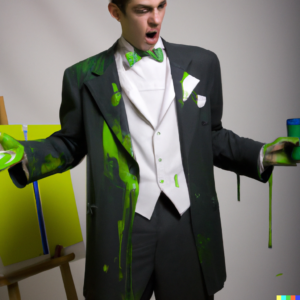
Dried acrylic peels right off of hard, smooth surfaces like glass, metal, and other plastics, but it easily stains most fabric and leather as well as wood. Only paint in clothes you’re ok with getting paint on, and cover surfaces in your workspace to avoid staining them as well.
Prepare Two Cups of Water
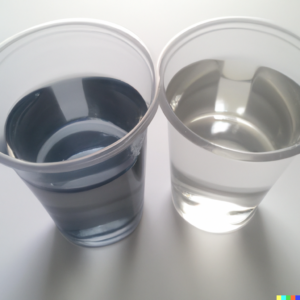
As you paint, you will use water to clean your brush and thin paint as you apply it. Set aside one cup for “dirty” water from cleaning the brush, and another for “clean” water for mixing with paint, to avoid contaminating your colors. When the water in either cup gets too tinted or dirty – in other words, when the color of the water starts showing up in your paint – pour it out and refill with clean water.
Clean & Dry Brushes Thoroughly
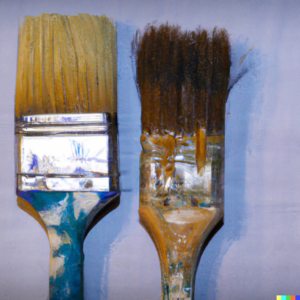
Clean your brush by stirring it through your water whenever you change colors, or if it is overloaded with paint. If you are switching between dramatically different colors, like black and yellow, you may want to rinse the brush in a sink to ensure it’s clean. Next, dry the brush on a paper towel to draw out excess fluid.
You can leave brushes in your dirty water glass temporarily while you work, but they shouldn’t be stored or kept wet for significant periods of time. When your are done using a brush, rinse it under running water until there’s no more color coming off it, then dab or gently press in a paper towel to dry it before putting it away.
Mix & Thin Paints on a Palette
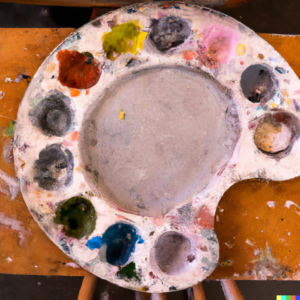
A palette is a surface you use to mix paints together and thin them by adding water. Plastic and glass palettes are popular for being cheap and easy to clean, but almost anything can be a palette – tupperware lids, scratch paper, even cardboard boxes. For some work it can make sense do use two or more separate palettes, such as a main palette for the dominant colors in the painting and a sketchbook page for mixing accent colors. But whatever you use, make sure it’s clean it’s clean before you start – you don’t want dirt or dust mixing in with your paints!
Reusable palettes should be thoroughly washed with your brushes when you’re finished painting.
Don’t Overload Your Palette
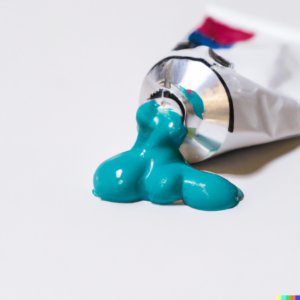
A little bit of acrylic can go a long way, but once it’s out of the tube you’ve got to use it or lose it. Only add paint to your palette as needed while you work. It’s better to refresh your palette a few times over a painting session than to waste a bunch of unused paint at the end of it.
Be Conscious of the Drying Time
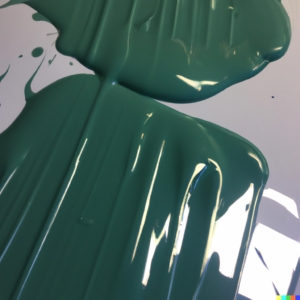
A coat of acrylic paint will usually dry to the touch in 10-30 minutes. The exact time depends on a few things: the thickness of the paint, the surface it’s painted on, even the weather.
Dry to the touch is not the same as dry – you should ideally wait 12-24 hours before handling or putting significant weight/pressure on painted surfaces.
This means that on days when we use paint, we will stop painting start cleanup at *least* 15 minutes before the end of class.
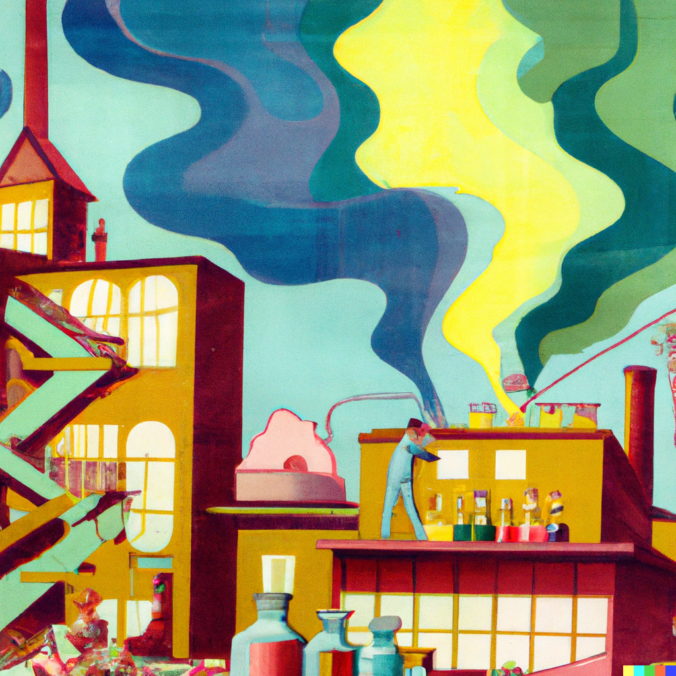




Leave a Reply